I Know Why the Songbird’s Caged
This week’s Substack uncovers the forgotten story of ADRIANA CASELOTTI, whose voice made Disney millions – but whose career was stymied by Walt’s whims.
Before Gal Gadot and Rachel Zegler, there was Lucille La Verne and Adriana Caselotti.
Not that they’re even credited in 1937’s Snow White and the Seven Dwarfs. None of the voice artists are – a deliberate choice of Mr. Disney’s. It spoiled the magic, Walt felt, if audiences tethered vocals to the real people behind them. Truthfully, I knew little about either woman. Beyond La Verne’s dual roles as the regal queen and cackling hag. Achieving the latter’s raspy menace by removing her dentures. And I understood there was some Kathy Selden tomfoolery with Caselotti. Tied to the Mouse House, her career was stifled by typecasting and the studio’s chokehold. Thus, she rarely ventured beyond Snow White’s shadow. Her off-screen line, “Wherefore art thou, Romeo?”, in the “If I Only Had a Heart” sequence in The Wizard of Oz being a famous exception.
I fell down this rabbit hole – to borrow from a later Disney film – when I stumbled upon this picture:
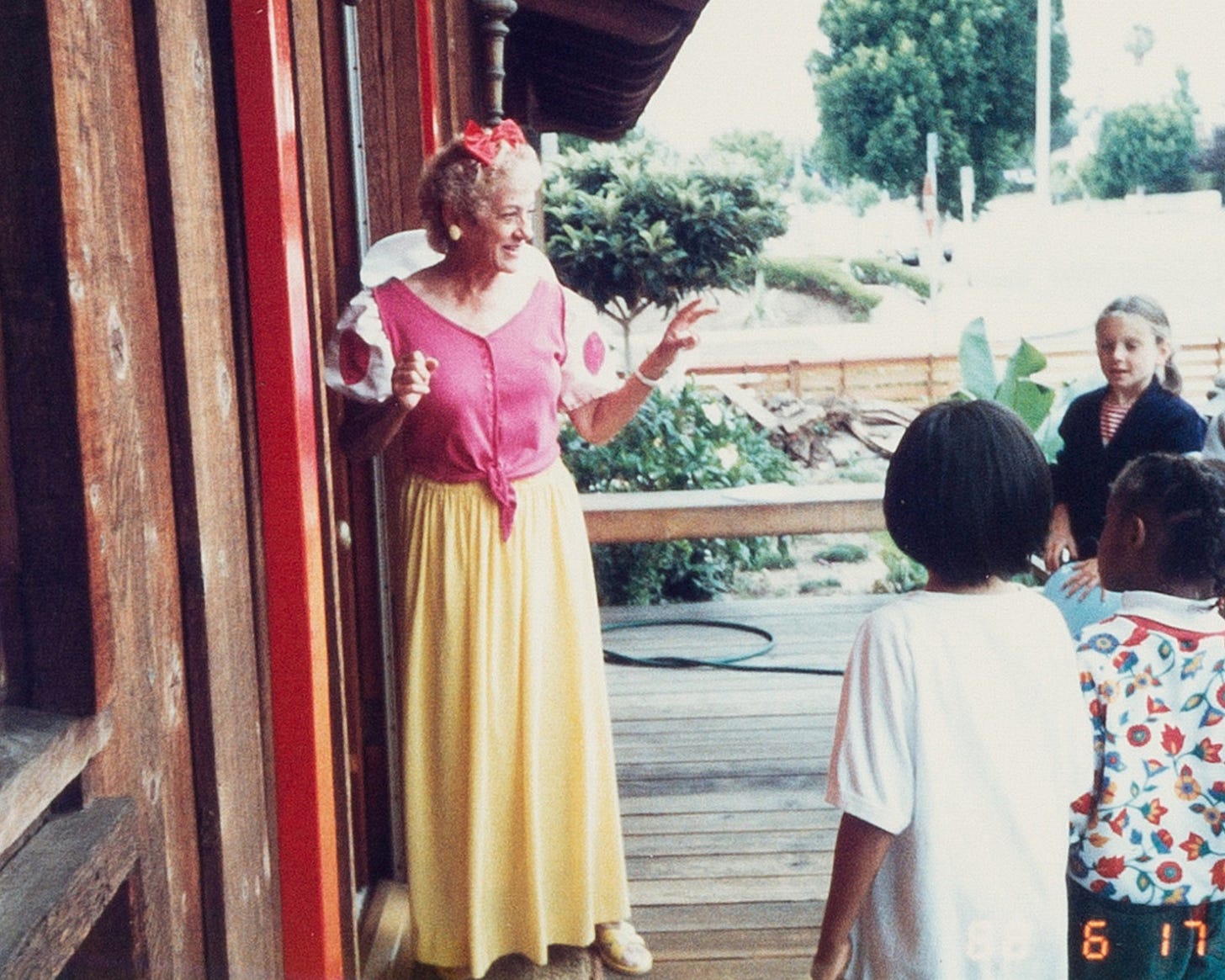
It made me sad.
Probably because it spoke to my own feelings of arrested development. I’m sure I couldn’t squeeze my hairy hams into Peter Pan’s tights, though! Without context, I saw Ms. Caselotti as Baby Jane Hudson. Still wearing what looks like a joke-shop version of her costume in her seventies and assuming the character’s girlish lilt on demand. Selling stories to supermarket tabloids; and living in a chintzy memorabilia-filled home. By then, she’d divorced two husbands and outlived two more. Crooning “Someday My Prince Will Come” while washing dishes with tired arthritic fingers.
Despite forays into stocks and real estate, Ms. Caselotti never received appropriate remuneration for her part in the most successful and influential animated movie ever made. “Whistle while you wait,” announced a typically measured headline from Globe – “songbird Adriana Caselotti made a mint for Walt Disney as the voice of Snow White – but she’s had to settle for peanuts.” Though a frequent litigant, she refused to bash the Disney empire; and went about her grievances in a mannerly way. Befitting a member of the Greatest Generation.
In 1935, Ms. Caselotti came to the conglomerate’s attention when Walt’s representative consulted her father, Guido Caselotti. Guido, a Los Angeles vocal coach, was tasked with finding a young woman with operatic training who could talk like a child. The studio rejected 150 others (among them soprano and rival of Judy Garland’s, 13-year-old Deanna Durbin), as “too mature”. Overhearing her papa’s conversation, a teenage Adriana suggested herself, performing juvenile hijinks and falsetto trills on the extension phone.
“That’s perfect!” enthused Disney “she sounds to me like a 14-year-old girl!” The rep gulped. “Well, she’s 18.” The boss was resolute. “That was it. It was a little girl called Adriana Caselotti and she came from an opera family,” Disney reminisced “she could do all this beautiful birdlike stuff. So I signed her.”
Over the next two years, Adriana was sporadically called to the studio on forty-four occasions. Recording her lines piecemeal (and the entire Churchill-Morey score a cappella), Ms. Caselotti never interacted with another actor or musician. Beyond Frank Churchill’s pitch references on a tinny piano. Nor did she ever hear one snippet of playback. Earning $20 per session, and a little for good luck, she netted $970. Marjorie Belcher, Snow White’s live-action model, received half. $10 a day. Belcher was plucked from obscurity in the same way – although her father ran a dance, not singing, academy. As Marge Champion, wife of Gower, she later found fame in Hollywood’s greatest dancin’ duo this side of Astaire and Rogers.
Whether Marge or Adriana had any inkling that the project – “Disney’s Folly” – was more than just a Silly Symphony is another matter. Indeed, it was only at the premiere, to which she wasn’t invited, that Ms. Caselotti realised Snow White and the Seven Dwarfs was a full-length animated feature. The first of its kind.
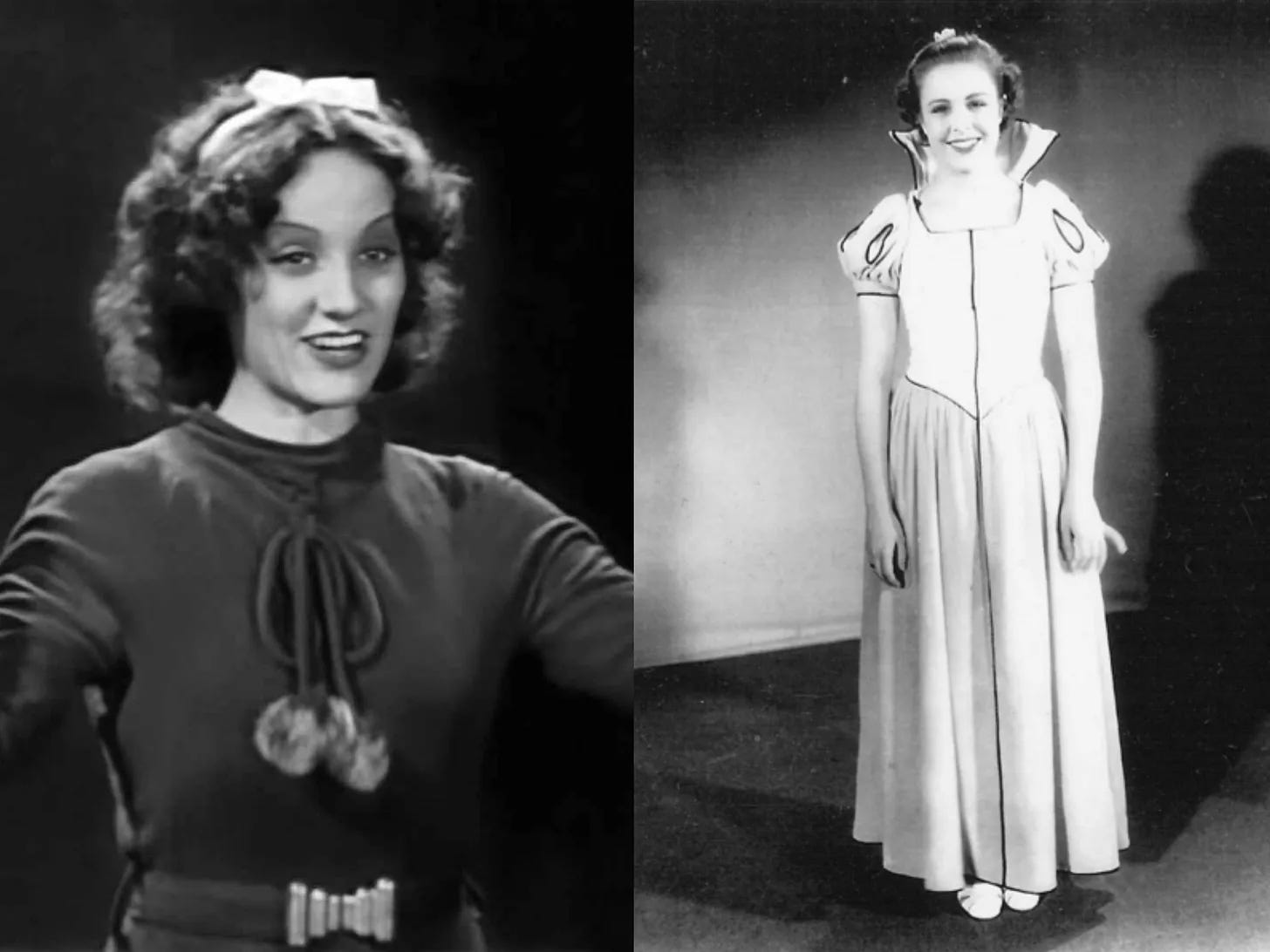
“I went with Harry Stockwell who was the voice of The Prince,” Adriana confessed in 1993 “when the girl asked us for our tickets, I said: I’m Snow White and this is Prince Charming. She said: I don’t care if you’re the witch, you’re not going in without a ticket.” Stowaways in the balcony, a greater shock was to come. “Every animator, illustrator and ink girl had their name up there,” Caselotti recollected “but I didn’t get any mention at all. It was like I’d been part of the orchestra!”
The following year, Caselotti and Stockwell filed a lawsuit over a portion of record sales. Their musical numbers – “I’m Wishing”, “One Song” and especially “Someday My Prince Will Come” – became instant standards. Uncle Walt’s attorney produced a legal document proving “she had signed all her rights in her performance to Disney every time she put her signature to her paycheck”.
Despite good reasons to be bitter, Ms. Caselotti donned her Snow White fancy dress into old age. She last did it in any official capacity in 1946, at thirty, at the Atlanta premiere of Song of the South.
Out of the goodness of her heart, it continued to make appearances at children’s hospitals and schools. She prided herself on never becoming “a big fat slob”, which, in her view, standing at 5’2”, was anything over 110 lbs. However, when a little girl blasted “Snow White’s grandma” in 1951, when Adriana was thirty-five, the outfit was temporarily retired. Dear departed Carrie Fisher, eight years sober, often heard something similar. At comic conventions, brusque brats would bark: “I want the other Leia, not the old one!”. Fisher and Caselotti have that in common. A role that both defined and limited them.
Unlike Carrie, Adriana’s career was derailed by one mogul. Walt Disney may not have intended to crush her prospects, but that’s how it appears to modern eyes. Accompanying the remake’s limp roll-out, my feed’s filled with sensationalist articles claiming she was blackballed. The insinuation is that Ms. Caselotti endured this unfairness stoically. A foil to Rachel Zegler, Grub Street’s favourite punching bag after Meghan Markle, with her Olympian entitlement. Certainly, the poor girl’s heart is in the right place – but her forthrightness defies both media training and the leeway we should accord a 23-year-old.
The knives were primed from the get-go. Hark back to the 94th Academy Awards. Ms. Zegler leveraged Twitter outrage to secure an invite, unduly pressuring the Academy rather than confronting Steven Spielberg. Her antics also disrupted the COVID-delayed Snow White shoot, which began in London in March 2022, forcing an inconvenient reshuffling of scenes. Contrast this with 1938, when Disney prohibited Adriana Caselotti’s career-boosting spot on the Jack Benny radio show, fearing it would shatter Snow White’s mystique. “It was the big break I was dreaming of,” she later said, “unfortunately Walt wouldn’t allow me to appear.”
Caselotti sighed. “He thought it would ruin the illusion.”
Voice acting was in its infancy. Adriana Caselotti’s plight seems quaint when Dan Castellanata still commands an obscene salary for The Simpsons – to say nothing of the cartoon fortunes of Trey Parker and Matt Stone or Seth MacFarlane. Not that voice acting is easy. Crafting a believable character with just one’s vocals; ensuring timing and emotional depth – under tight direction. For Ms. Caselotti, it was a high-wire act. Without a net. She had neither visual crutches or precedents to draw from. Nor protections. Sadly, her voice only kept her in good stead in obscured, minor ways. I’ve mentioned her fleeting cameo in The Wizard of Oz. There’s another in It’s a Wonderful Life. Moreover, her high-pitched, sugary tone stymied theatrical opportunities. Recognisability was her ruin. Disney’s influence and industry dynamics allied to restrict her possibilities more than her talent deserved.
It wasn’t until after Walt Disney’s death that the company reluctantly acknowledged Adriana Caselotti’s part in its crown jewel. Allowing her to reprise the role for a “Call Your Favourite Character”-gimmick in 1967. At the world’s fair in Montreal, children could telephone Mickey Mouse, Donald Duck, Goofy, Pinocchio… and Snow White. She later supplied the voice for Disneyland attractions. Ms. Caselotti made it clear that on the Fairest of Them All, she had a franchise.
When actress Mary Kay Bergman voiced the little princess in a skit preceding the Best Animated Short category at the 65th Academy Awards, a 77-year-old Caselotti was fit to be tied. (“I don’t blame her,” Bergman maintained, “I consider Adriana the definitive Snow White. She created the most cherished character in animation feature history. Period.”) Bergman never openly admitted to voicing Snow White again. During the controversy, Caselotti bemoaned: “I was paid a total of $970 to sing the role. And I get no residuals”. Having sued Disney once, she considered doing so again – although fifty years later, she’d “rather do it in a friendly way”.
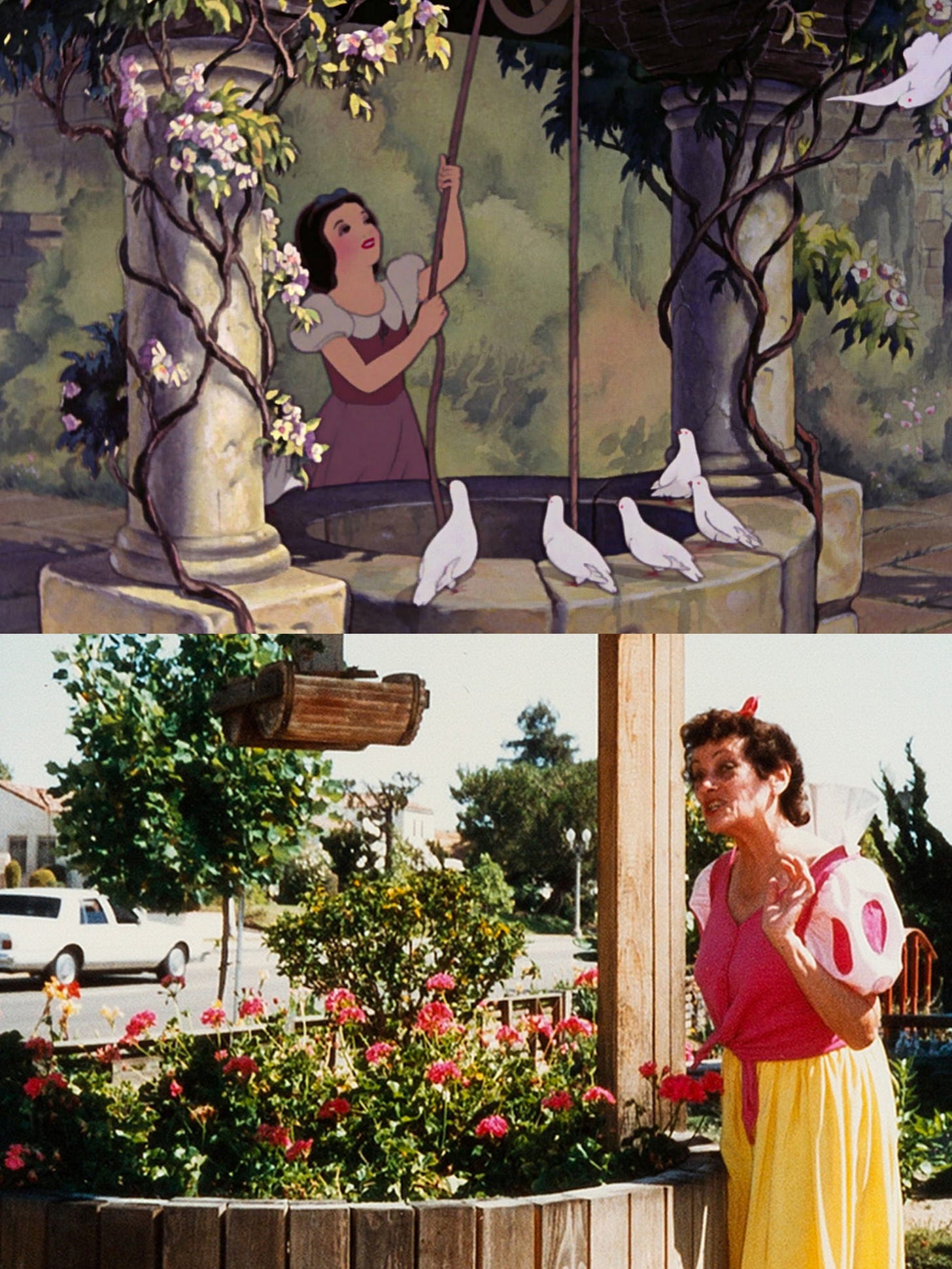
To us, Walt Disney’s unethical practices are clear. But cultural context only explains so much of the anti-Semitism or racial stereotypes, union-busting and misogyny that pervaded his tenure. The callous treatment of individuals like Ms. Caselotti has reverberations now. Think of Lindsay, Demi or Miley! And while I acquiesce that those ladies weren’t minors at the times of their dismissal, it still rankles.
Productivity over protection! Disney’s hardly alone in slavish capitalistic devotion – or indifference to its young charges. But beneath the family-friendly façade lies countless talents extinguished before their time. Remember Bobby Driscoll? In hybrid films, blending live-action and animation, like Song of the South and So Dear to My Heart, Driscoll helped stabilise the studio’s postwar fortunes. Disney’s Boy Wonder thrived (even doing Marge Champion-work for the Peter Pan animators) until acne and adolescence. What about the harsh moralising imposed on Tommy Kirk? The Old Yeller star whose homosexuality was verboten at the most conservative studio in town. “They weren’t stupid, they could add two and two,” Kirk said of the Disney fogeys “I noticed people in certain quarters were getting less and less friendly.” More could be said on this point. After all, we all know the perils of a limp wrist. But the boy 21-year old Kirk had his career-ending romp with was fifteen, which renders it moot.
While we’re on the subject, I’ll come clean. I intended this piece to be a joint biography of Adriana Caselotti and Lucille La Verne. Unfortunately, I swiftly discovered that Snow White’s Queen earned her greatest “acclaim” in blackface. It wasn’t just a sporadic thing, either. She specialised in it. “Tom-shows” were her bread-and-butter: the mocking minstrelsy that propagated African-Americans stereotypes worryingly close to our own times. These lampoons of Uncle Tom’s Cabin (in the 1907 season, La Verne actually blacked up for a legitimate adaptation) are rightly recognised as deeply racist and offensive.
On film, La Verne played Joice Heth, the African-American woman exhibited in a human zoo as “George Washington’s Mammy”; and worked with D.W. Griffith four times. Her penultimate Broadway turn was as a replacement in a Langston Hughes play, Mulatto, in 1935. When Rose McClendon, a leading black thespian, was struck with pleurisy; La Verne, her false teeth and her bag of make-up tricks was called upon. In 1936, pneumonia claimed the life of Ms. McClendon, the pioneering founder of the Negro Theatre Unit, just as she was poised to triumph – as Lady Macbeth in Orson Welles’s Voodoo production.
Although a widely accepted custom in Ms. La Verne’s time, blackface, much like Kirk’s pederasty, is indefensible today. So let’s move on.
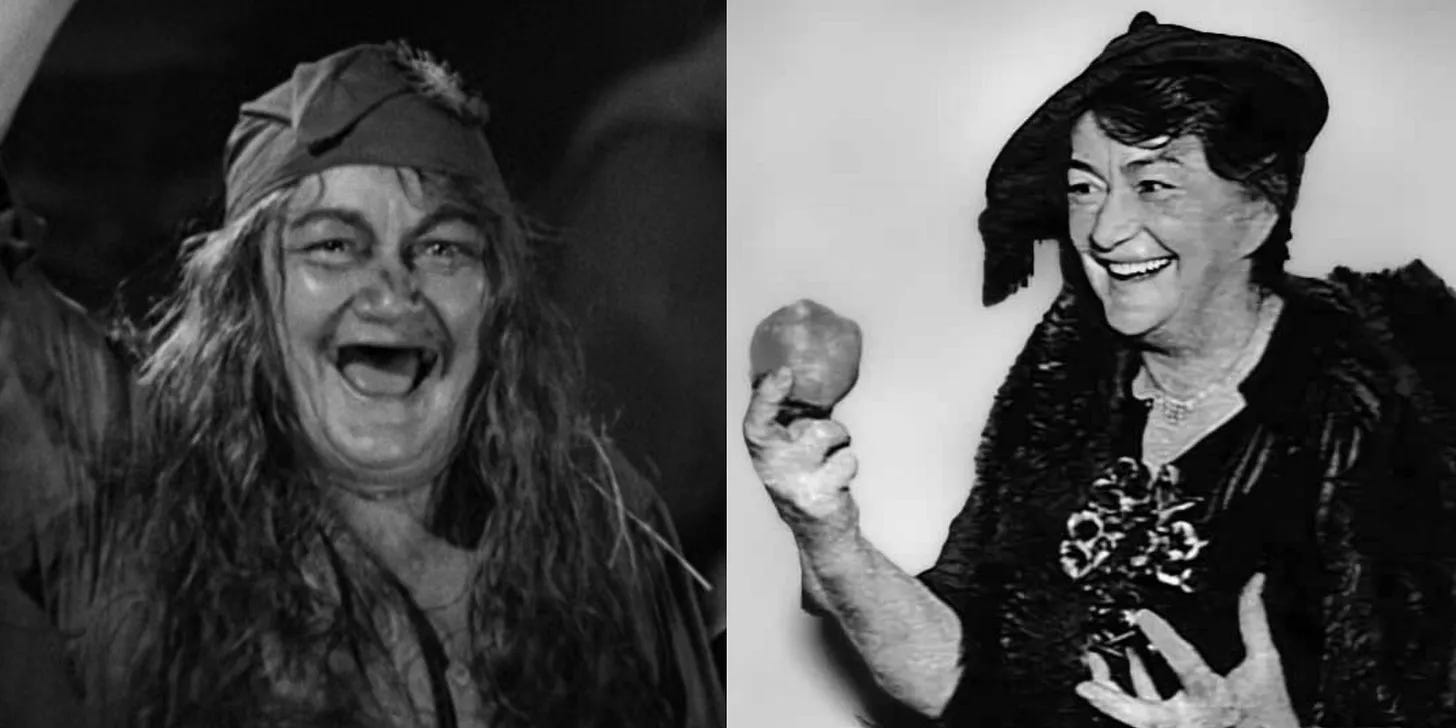
Discarded like yesterday’s newspaper, Bobby Driscoll spiralled into crime and narcotic dependence. He passed away at 31 and was buried in a potter’s field – much to the press’s glee. Those vultures never change. Nine years later in 1977, Matthew Garber, the young actor who portrayed Michael Banks in Mary Poppins, died of pancreatitis. A hepatitis complication from eating tainted meat in India. His family was forced to deny rumours of drug abuse ad nauseam.
As a kid, I vividly recall Murdoch rags salivating over how long it’d take Daniel Radcliffe, Rupert Grint and Emma Watson to crumble. Pictures of Macaulay Culkin, Tatum O’Neal or Drew Barrymore (in distressed states at their lives’ lowest points) accompanied such hit-pieces. Hinting that when (not if) the Harry Potter trio succumbed to addiction, it would be their fault. The hacks sneered that if Natalie Portman, a Harvard-educated gynaecologist’s daughter, or Jodie Foster, a French-speaking Yale graduate, could succeed, then failure was a personal choice – lazy confirmation bias implying the others Didn’t Want it Bad Enough. The complex realities of child stardom have always been ignored.
In Adriana Caselotti’s era, juveniles who resisted pills and liquor in the transition to adulthood invariably possessed a bootstrapping spirit. Margaret O’Brien and Shirley Temple credited their mothers. Loretta Young, her faith. Naturally, Young’s pious Catholic image clashed with the truth of her “adopted” daughter. An open secret, Judy Lewis’s parentage was betrayed by her telltale Clark Gable ears. Bear that in mind if you ever see me skulking glenntrified Dublin streets with a perambulator full of Little Russell Toveys.
We must grant vulnerable young people the help they deserve, so they can use their experiences to build the future they want! Adriana Caselotti didn’t have that. She placed blind trust in her superiors until the end. As she put it: “I got $970 for the entire film, but Snow White has done so much for me that I don’t care if I made a penny or no penny because I am so grateful to have been part of the greatest.” Casting Walt Disney as “one of the greatest men who ever lived”. Toxic positivity worthy of my parents, who similarly stayed in their lanes – although the generational standard of jobs-for-life and a house sweetened the deal – Ms. Caselotti concluded: “I feel that if I had not been Snow White, I would never have been the happy person I am”.
Let’s close with a clip. Her 1972 appearance on The Julie Andrews Hour. It captures her birdlike trill – a testament to resilience. And a vestige of the recognition, remuneration and career fulfilment that was never Adriana Caselotti’s to claim.
(Needless to say, “Someday My Prince Will Come”, made redundant by progressive story changes, exists only as underscoring in the remake.)
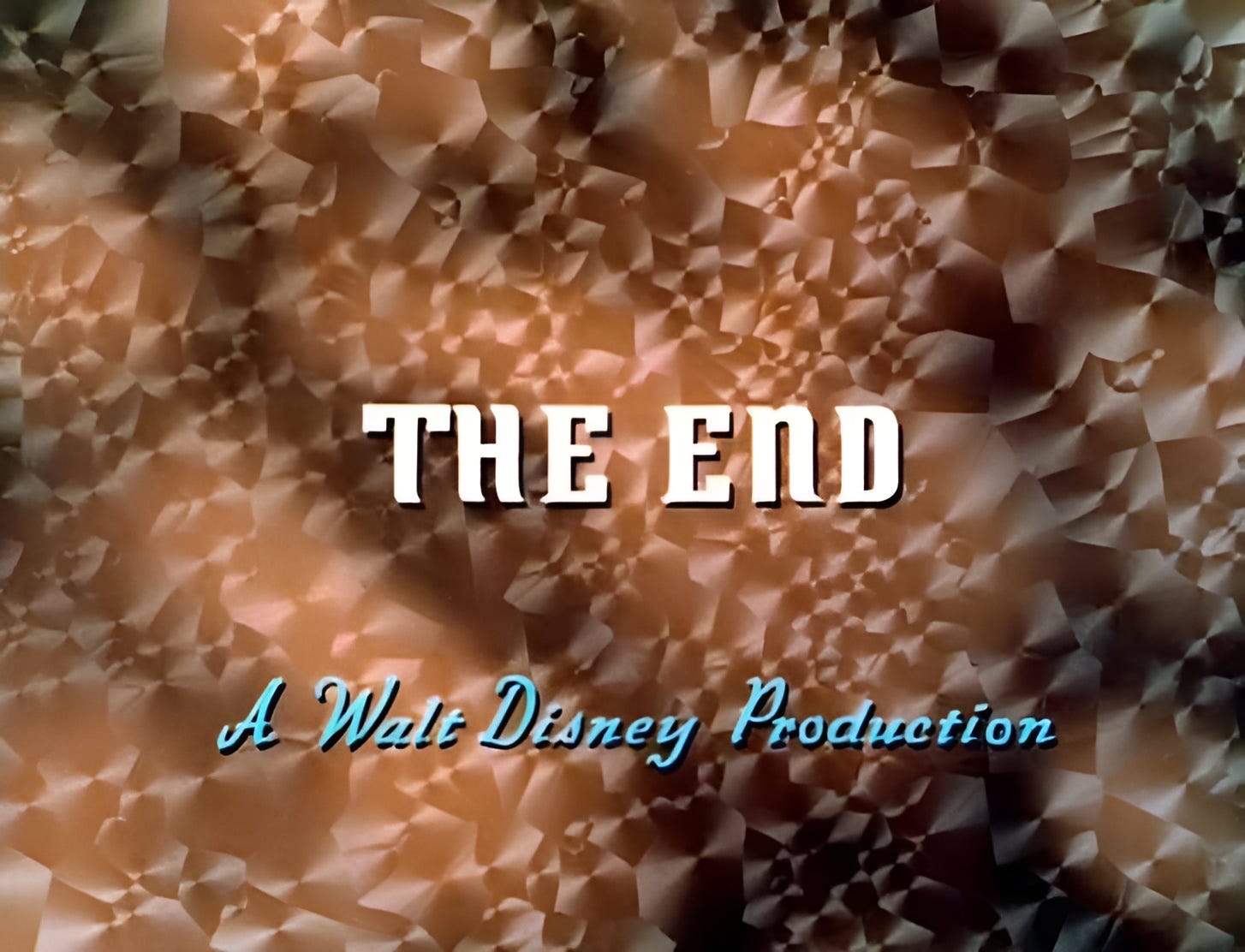
Read Next:
Cottagecore: Or How Sir John Gielgud Went to the Gents’ and Almost Lost It All
Edmund Burke’s Reflections on the (Revolution in France) Oscar Nominations, 1955
My Supporting Actress Series:
Vanessa’s Varicose Veins (1977)
Hattie McDaniel’s Legacy (1939)


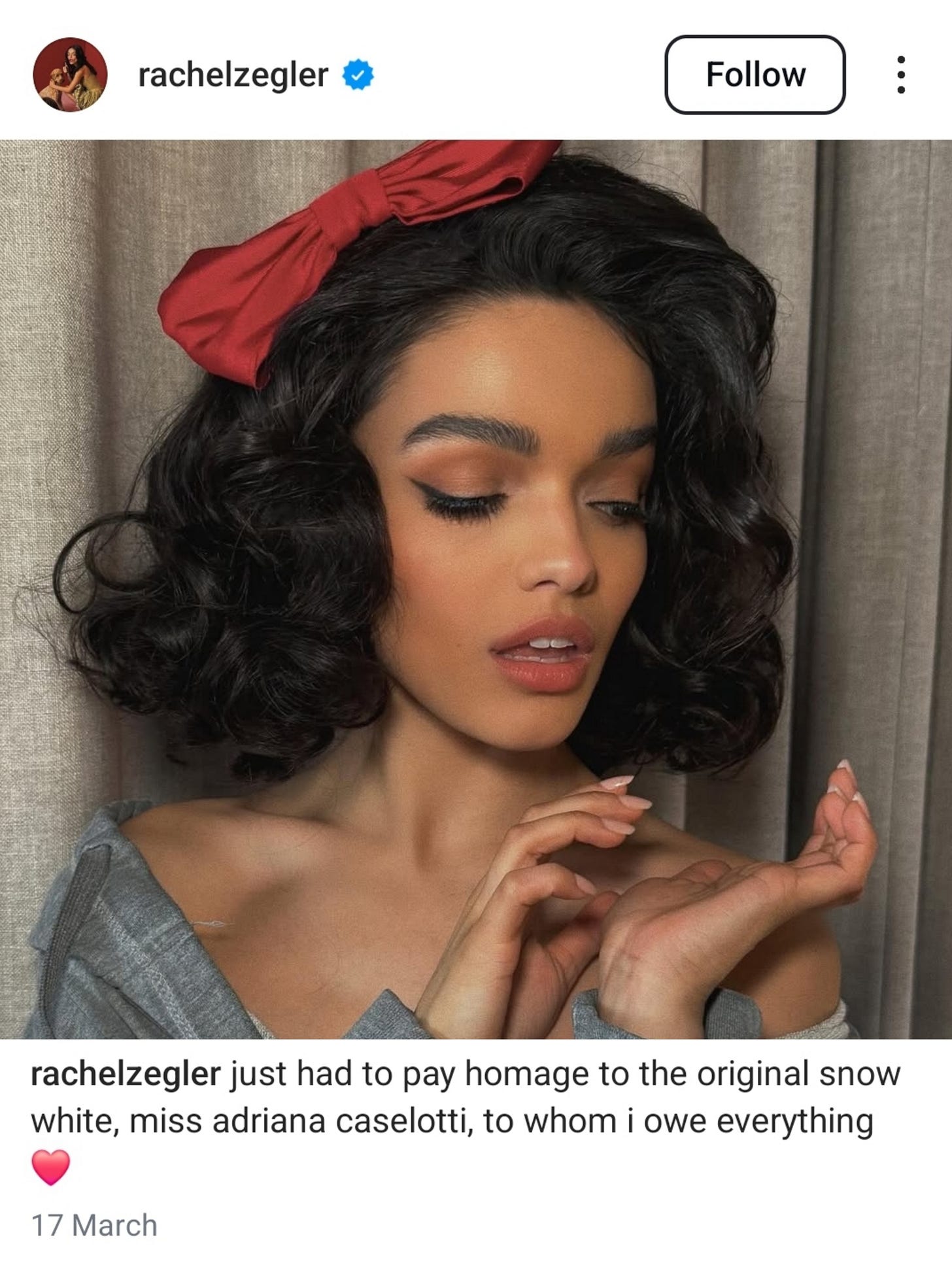
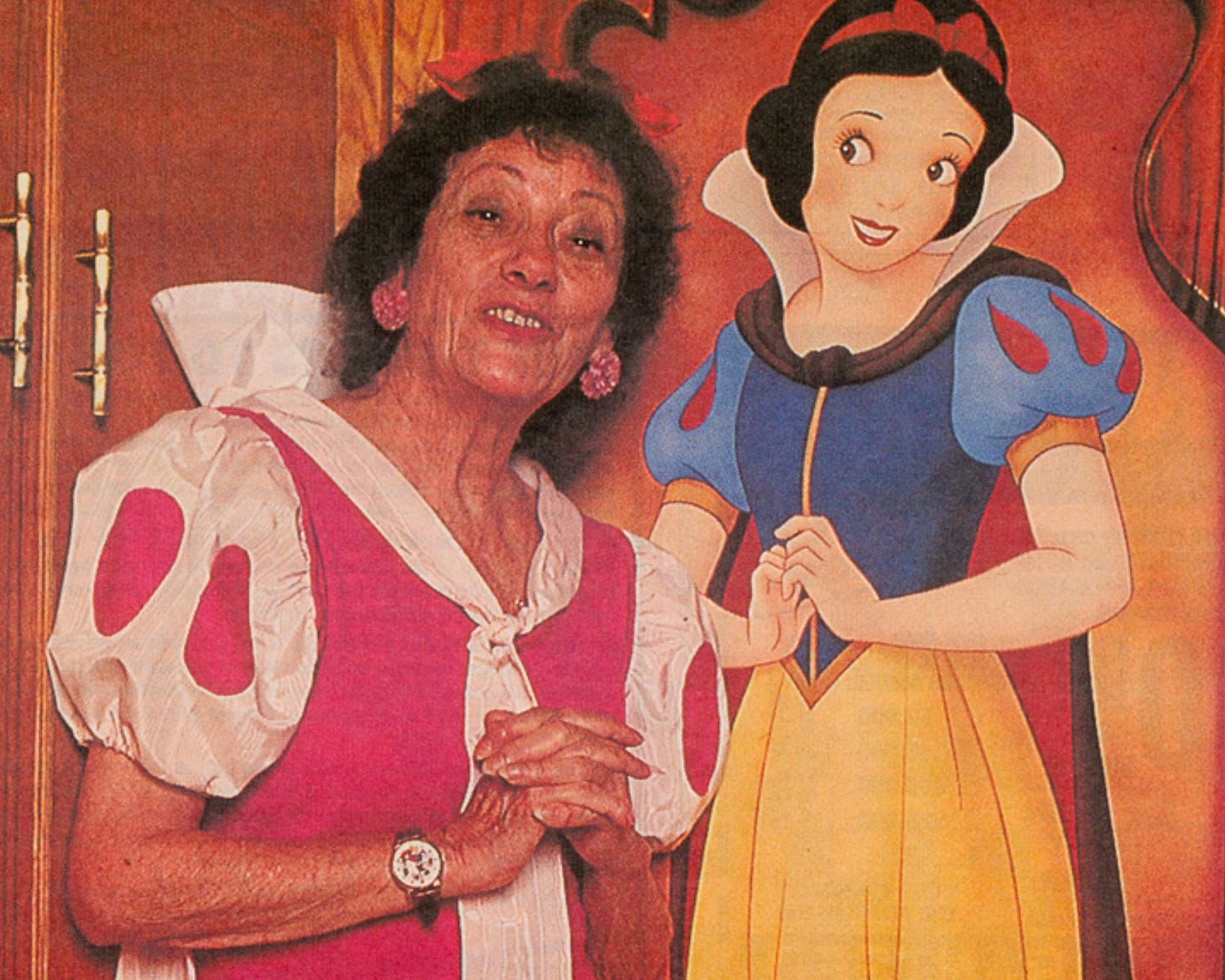
Really looking forward to Rachel Ziegler partnering with Carrie Underwood to recreate that clip—the Snow and Maria our generation deserves